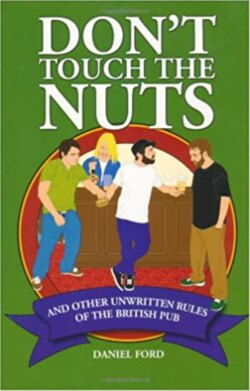Читать книгу Don't Touch the Nuts - Daniel Ford - Страница 8
ОглавлениеTHE WHITE HART OR THE COUNTRY SQUIRE?
Which pub is for you?
There are, basically, eight types of pubs, but within these categories there is a lot of overlap – you may well find a student pub near a harbour, for instance – and lots of sub-sections – music pubs, theme pubs and so on – but, for simplicity’s sake, let’s stick to the main eight.
1. The Local
All pubs are, to a certain extent, local pubs. However, a true local (often referred to as a ‘real local’) can be identified by one hard-and-fast rule: the moment you push open the door everyone stops talking and turns to look at you. Even the jukebox pauses. This is not the time to break step or ask if they serve risotto; simply march to the bar, nod at the nearest person, mutter ‘alwite’ and order the strongest lager on tap. ‘Locals’ tend to be in areas where people can walk to the pub, thus attracting the same bunch every night. As a rule, a local is sparsely decorated, has a darts team, shows the football on the TV at all times, and is never known by its full name – for example, The White Hart would be just ‘the Hart’ and the Stag’s Head would be known as ‘the Stag’s’. Interestingly, often you only have to go into the same pub three or four times and you too will be a local and allowed to stare at unsuspecting newcomers who stumble through the door.
2. Inner-city pubs
Surprise, surprise, these are found in the inner cities. Bereft of any architectural appeal or decor, they must have boarded-up windows and blood on the walls. They are usually named after the local area with the simple addition of ‘Arms’ – as in ‘Why-The-Hell-Does-Anyone-Live-Here Arms’.
3. Harbour pubs
See ‘Inner-city pubs’ above except these pubs are located by a harbour. They all have to be called The Ship or The Anchor; if the pub is particularly interesting it is allowed to be called The Ship and Anchor.
Harbour pubs are never called the Seaman’s anything, for obvious reasons.
4. Country pubs
At best, this will be a beautiful 16th-century inn where you can impress a date; at worst it will be a carvery overrun with children on Sundays. The former must have old benches where you can sit and stare over the fields/river/hills while chatting about how lovely it would be to live in the country; while it is obligatory for the latter to have a mini-Disneyland in the garden.
Country pubs have a lot of wood in them, and must claim to have had a famous person stay there once (take your pick from Charles Dickens, King George I/II/III/IV, William Shakespeare or Sven-Goran Eriksson).
If nobody famous actually stayed at the pub then the back-up rule is that it must have a ghost.
Names need to be countrified, such as The Country Squire, The Fox and Hounds or The Pheasant Inn. None are called The Pheasant Plucker, as far as I know.
5. Gastropubs
These are places that make more money from food than drink and therefore should not even be called pubs.
6. Tourist pubs
Have you ever been to an Irish theme pub in another country? Well, that pretty much sums up tourist pubs, although they’re often not quite as kitsch. Tourist pubs are found in places such as Oxford, Cambridge, York and the touristy parts of London. The main qualifying factor for a tourist pub is that, although most of the customers are foreign, none of the bar staff (even if they are foreign themselves) are allowed to understand a foreign accent or speak anything but English. Be prepared to wait 20 minutes to get served as the other customers grapple with their English, ask about the various merits of each (allegedly warm) beer, then finally order 16 plates of ‘traditional’ fish and chips before disappearing outside to find out what table number their party is sitting on.
7. Student pubs
Yes, you’ve got it, a pub where students go. Characterised by cheap prices, these pubs must have beer-stained tables and chairs and lots of things to keep young minds active, such as pool and darts and table-football; a quiz machine is an absolute essential, although you’re more likely to find a hotbed of drunkenness than intellectual debate here.
8. JD Wetherspoons
These pubs deserve their own category for their noble mission of renovating some great old buildings and providing food and drink at great prices (which often act to drive prices down in nearby pubs as well). Please note, however, that they must not have music or any atmosphere whatsoever.
‘Harbour pubs are never called the Seaman’s anything, for obvious reasons.’
